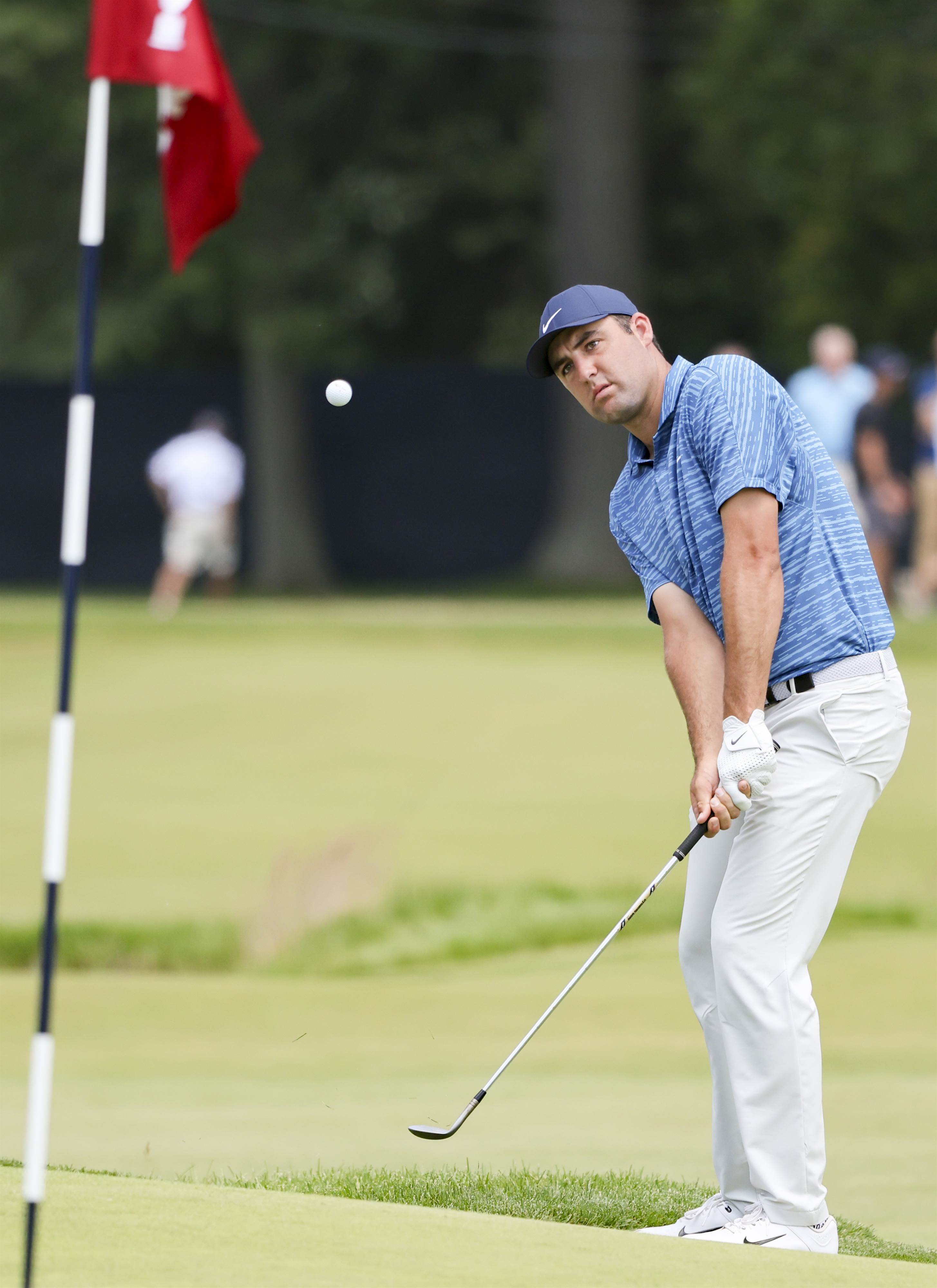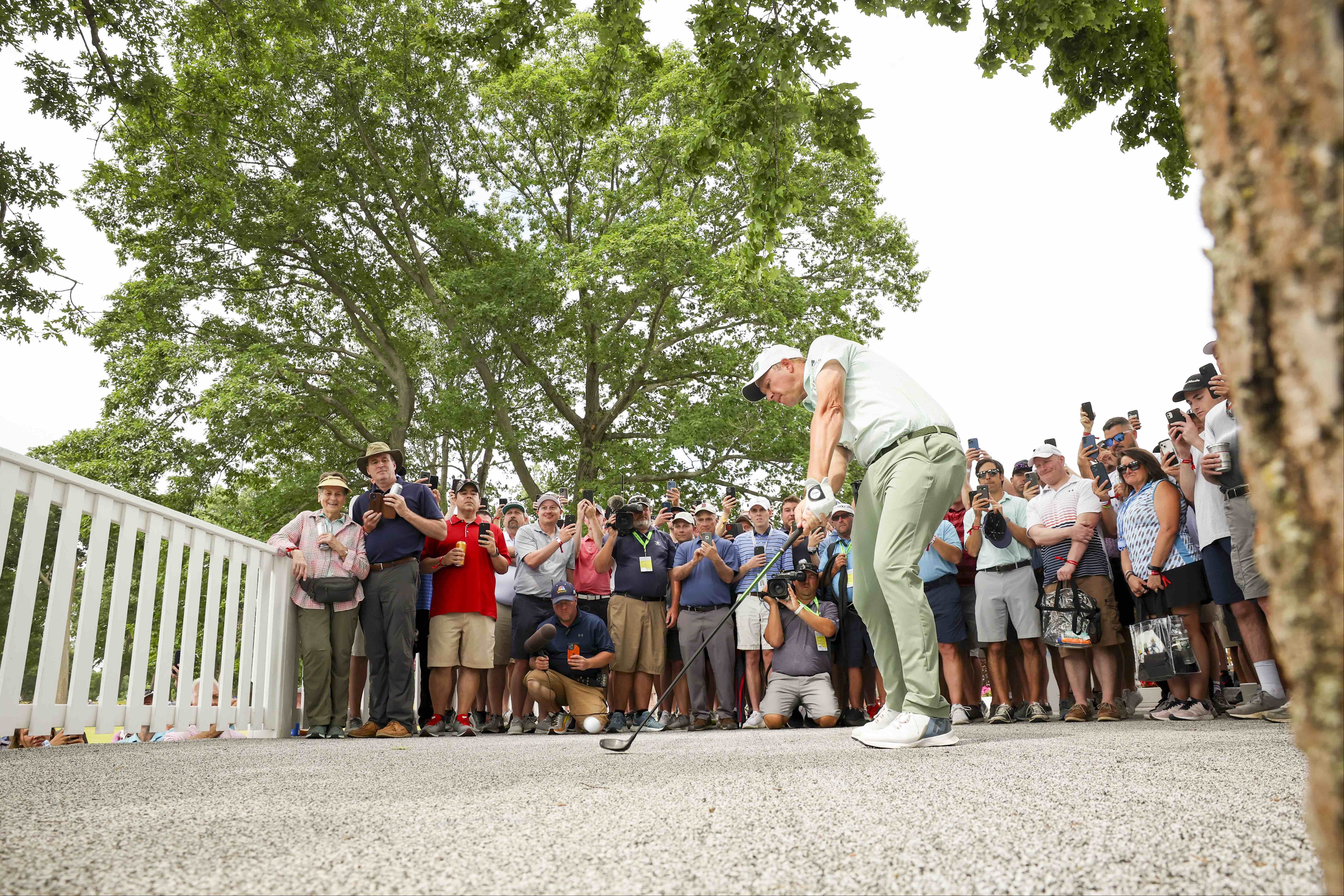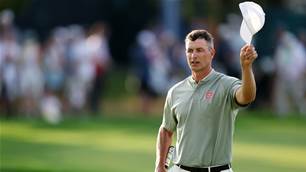Rudyard Kipling might have been a golfer. Then again, maybe not. But even if he never teed-up anywhere, you get the feeling the Englishman born in India knew a thing or two about the endless vagaries of the stick-and-ball game Scotland gave to the world.
Kipling's most famous poem, “If,” contains advice every U.S. Open competitor could surely apply to the endurance test that this week is 72-holes over The Country Club.
“Meeting triumph and disaster and treating those imposters just the same” is the perfect mantra for anyone playing a course set-up by the often Machiavellian United States Golf Association.
Amidst the seas of rough, ever-firmer greens and tees located only after lengthy hikes from the previous green, the extremes of Kipling’s philosophy were on vivid display during the second round of the 122nd U.S. Open. And no two players epitomised those better than Wolrd No.1 Scottie Scheffler and the man ranked 295 places lower, M.J. Daffue.
After 28 holes, Daffue, a 33-year-old South African who recently clinched his PGA Tour card for next season with a pair of third-place finishes on the second-division Korn Ferry Tour, was six-under-par and three shots clear of even his closest pursuer. At that same stage, Scheffler was plodding along, one-over-par for the day and the round and seven shots behind the leader.
 A quick look at the scoreboard at the end of the second round tells a different story. With two rounds completed, Scheffler is three-under-par. Daffue, amidst a flurry of dropped shots, low-lighted by a double-bogey six on the 451-yard final hole is on 139, one-under-par. Those paying close attention will have already worked out that such a dramatic change in circumstances represents a nine-shot swing in only eight holes. Triumph and disaster indeed.
A quick look at the scoreboard at the end of the second round tells a different story. With two rounds completed, Scheffler is three-under-par. Daffue, amidst a flurry of dropped shots, low-lighted by a double-bogey six on the 451-yard final hole is on 139, one-under-par. Those paying close attention will have already worked out that such a dramatic change in circumstances represents a nine-shot swing in only eight holes. Triumph and disaster indeed.
RIGHT: Scottie Scheffler turned a so-so round into something special late in the day at the U.S. Open. PHOTO: USGA.
To be fair, Daffue (pronounced “Duffy”) handled any disappointment he was feeling in just the sort of way Kipling had in mind back in 1895 (ironically, the first U.S. Open was played that same year), when he put his famous words to paper.
“Today was up-and-down, obviously,” said Daffue, who has admitted to battling bouts of depression during ten years as a professional spent mainly on minor Tours and Monday qualifying (in which he has succeeded in 12 of his last 20). “My back-nine was really disappointing. I did the simple things really bad. But if you'd told me before yesterday I would be one-under-par and in the top-15 after finishing my round today, I would have said ‘yes.’ So taking everything out of the equation, I’m happy where I am and still in it with two really good rounds.”
Still, Daffue’s slide from prominence to relative obscurity, is worthy of further analysis. One hole especially. Daffue’s tee-shot on the uphill 619-yard par-5 14th flew way left, landed in a hospitality suite, bounced off the bar and ended up sitting free and clear towards the entrance to the premises. He had a shot, albeit not an easy one.
“Meeting triumph and disaster and treating those imposters just the same” is the perfect mantra for anyone playing a course set-up by the often Machiavellian United States Golf Association." - John Huggan.
“I had 278-yards to the front of the green,” he explained. “It's also 10 uphill, so it's 288. I had an option to drop, but it would have been in the thick rough. From there I wouldn’t have been able to get it onto the second fairway (on top of the hill). I didn't want to hit a 7-iron to a blind target. But I have a 4-wood in the bag, and the lie was so good in the hospitality. The floor had a little bit of spring in it. Even if you hit a little bit behind the ball, the club will actually bounce into the ball. Besides, I was far enough left to miss the tree on the left. I think it was an awesome shot.”
It was but it led only to a bogey, his second in three holes and a prelude to what was to come on the 18th. There, Daffue drove left, the ball landing in a bunker before hopping out onto the upslope on the far side of the sand. From there, Daffue found another bunker short of the green, before thinning his next one over the green. The ensuing double-bogey was achieved amidst an air of inevitability.

All of which contrasted hugely with the performance of Scheffler over the closing eight holes. The turning point came at the aforementioned 14th. Short and left in two after hitting a tree with his attempted approach, the Masters champion chipped-in for a restorative eagle. Suddenly, Scheffler was two-under-par, one off the lead and headed for a splendid round of 67.
“I just stayed really patient,” said the 25-year-old Texan. “I knew I was swinging at it well. I hit it really good yesterday, I hit it really good today. Two silly bogeys early in the round, but outside of that I hit it really good. I was in position most of the day. If a few more putts would have fallen in versus going around the edge, it would have been a really special day. But three-under is a good score for me, especially as I was two-over through six.”
Scheffler, of course, is well able to wax philosophical about his ultimately successful day. His months and year are going pretty well too. But Daffue, although his career is on the up with the knowledge he will be playing on the PGA Tour next season, has seen tougher times. But those periods in his professional life that have given him a clear perspective of what really matters.
“My life is really good,” he said after his opening 67. “I have a great family, and everybody is healthy. I think just being grateful for things has really given me a step back, and looking from the outside in. Eventually, this is just a game. We’re playing against the best in the world and it is a privilege to be here.”
Whatever else happens over the next two days, Daffue seems to have the important stuff figured out. Kipling would no doubt be proud.
Related Articles

Under the radar into contention: Si Woo’s scintillating Australian Open Saturday

Henley cards 61 to lead Tour Championship













